The holy grail of eCommerce metrics is customer lifetime value to customer acquisition cost ratio, commonly referred to as the LTV to CAC ratio.
In layman’s terms, it’s basically all the profit a single customer is going to generate, divided by the money it costs to acquire a single customer.
It’s a quick way to measure how profitable your business is or can be, at scale. It’s at the heart of understanding the unit economics of your business.
For example, if 1,000 customers purchase something from your store and it generates you a gross profit of $30,000, your LTV is $30 ($30,000 / 1,000). If you spent $10,000 on advertising to acquire though 1000 customers, your CAC is $10 ($10,000 / 1,000). Therefore your LTV to CAC ratio is 3.0 ($30 / $10).
Even though it’s just an example, 3.0 is actually a healthy ratio for eCommerce. If it’s under 3.0, your long-term profitability and sustainability may be at risk.
LTV to CAC ratio is a metric we heavily track at PureFilters and other eCommerce operations. I strive to improve this ratio on a regular basis, and a recent change in my approach made a drastic difference.
Changing My Approach For Improving LTV to CAC Ratio
The problem is, I’ve seen too many entrepreneurs fixated on CAC and neglect LTV. I fell victim to this same trap. As a result, my LTV to CAC ratio remained stagnant for a long period of time. This is until I took a step back and implemented strategies to improve LTV instead.
The results were incredible and did wonders for our profitability. You can see the difference below, measured on a rolling 90-day basis.
(Note: LTV below is calculated as gross profit per customer. We use the app OrderMetrics to help us calculate it.)
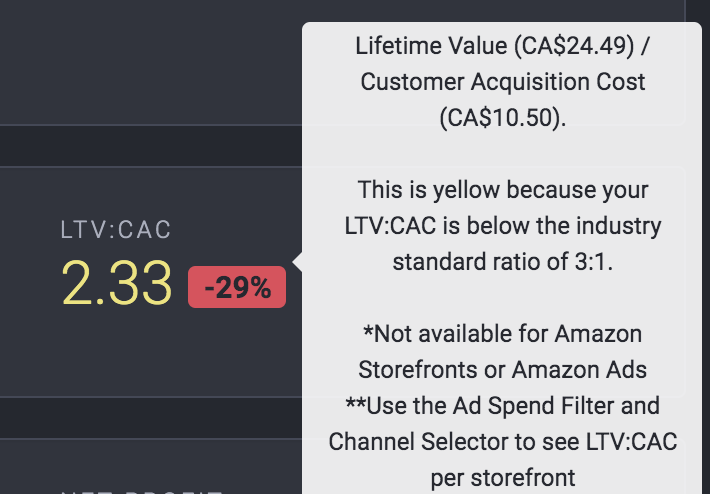
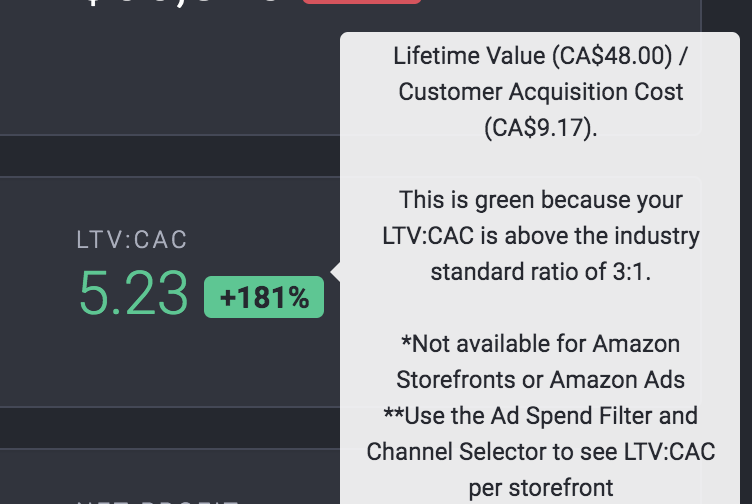
Let’s dive into the exact strategies I used so that you will have some actionable ways to improve the LTV to CAC ratio.
But first, let me explain why focusing on just CAC is a fool’s errand.
Why You Should Stop Focusing on Just CAC
Coming from a PPC agency background, it was really hard for me not to obsess over CAC.
Each day I’d spend countless hours optimizing our ad accounts, trying to figure out ways to reduce spend and increase conversions. I’m willing to bet, most eCommerce entrepreneurs are the same way. Most of us are advertisers by trade, and it’s tempting to spend all of our time reducing CAC.
But after a while, you hit a wall, and the ROI on your time spent in your ad accounts start to diminish. Spending hours in your account to improve your CAC by a couple of percentage points just isn’t worth your time.
Also, depending on the product you sell, your CAC may be something you will actually end up paying in perpetuity thanks to something I call the Google Search Tax.
Plus, if you’re in any sort of moderately competitive niche, CAC will rise year after year no matter what you do. More entrants will join that are willing to spend more on ads, pushing up the cost-per-clicks (CPCs). It doesn’t matter whether you advertise on Bing Ads, Facebook Ads, or any other sort of pay-per-click platform, the same principles apply.
It’s like treading water in the open ocean, you can only do it for so long before you drown.
So what’s the lifeboat?
Improving your customer LTV.
Having a high LTV, especially in comparison to your competitors, will make your business so much more valuable. Your customers are worth a lot because they spend more money with you.
There are several levers you can pull to increase your customer LTV, but here are some of the tactics I implemented.
Up-sell A Better Product
This probably the most obvious way to get your customers to spend more. Get them to pony up and buy a superior product. There are two ways you can achieve this:
- Up-sell to a better product entirely
- Up-sell the same product but a better variant
If you are using Shopify, you can use a tool like Bold Up-sell to implement either of the two options to fire automatically.
For PureFilters, most of our filters come in 3 different variants; good, better, and best. If someone adds the good filter to their cart, a pop-up appears to upsell them to better. If someone adds the better filter to their cart, a pop-up appears to upsell them to best.
Here is an example of of an up sell in action:
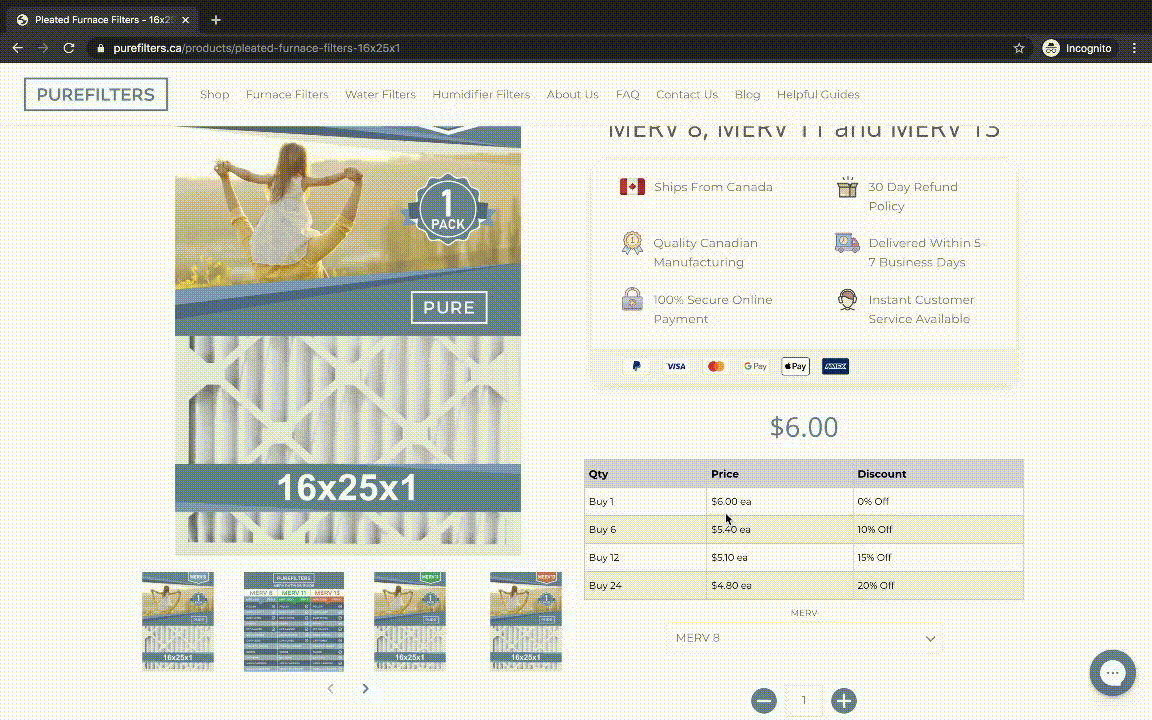
As you can see, for every customer that converts, revenue is increased from $9 per filter to $12.50 per filter. This represents a 39% increase in LTV, which is much easier than trying to reduce your CAC by 39%. This has an immediate positive impact on LTV to CAC ratio and works for you on autopilot.
Offer Quantity Discounts
Reward customers for buying more, it’s a simple concept. Depending on what you sell, having quantity discounts in your store may attract larger B2B buyers as well.
Even if you do not sell a product that normally isn’t bought in bulk, your customers may see the discount and team up with a friend or family member to make a larger purchase in order to get a better price.
There is another Bold Commerce plugin we use for this called Quantity Breaks.
It puts a nice quantity discount grid on the product page, like this:
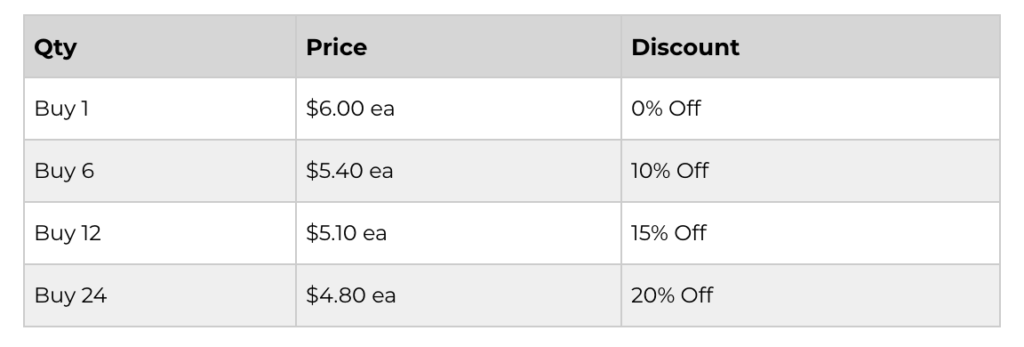
You can use flat dollar discounts or percentage discounts.
Either way, you are incentivizing your customers to buy more. That translates into incentivizing your customers to increase LTV, without having to lift a finger.
Offer Free Shipping Only Over A Minimum Amount
With Amazon’s successful Prime program, I think it’s safe to say that consumers love free shipping. In fact, I’ll even go as far as saying consumers HATE paying even a tiny sum for shipping.
This meme sums it up best:
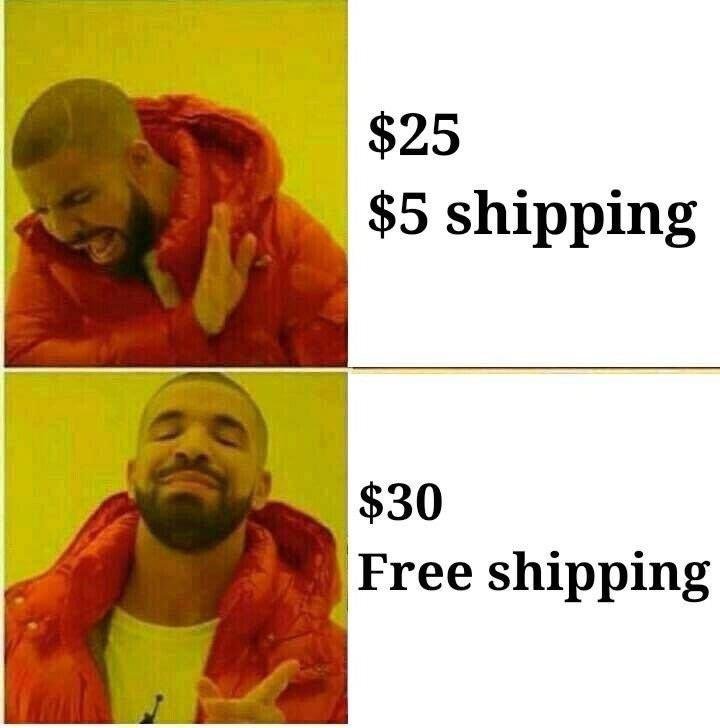
I won’t get into the consumer psychology behind this, but what you need to know is simple:
Customers will buy/pay more in order to get free shipping.
We tested several different free shipping thresholds from $50 up to $150, and we settled on a sweet spot of $80 for our store.
If you offer free shipping on all orders, why not test offering free shipping only above a certain cart amount instead? And charge a small shipping fee if the cart is under that amount.
Test a few different free shipping thresholds, until you feel you found your sweet spot.
If you do not notice a sizeable drop in conversion rates with a free shipping threshold, boom, you just increased your LTV with just a few clicks.
Cross-sell Related Products
This one actually goes hand-in-hand with a free shipping threshold. Cross-selling related products will help your customer achieve the free shipping threshold.
If you offer free shipping over $80, and a customer came to your store to buy a $50 item, they may add another $30 item to their cart to get free shipping. They weren’t originally intending to buy that second $30 item, but as I mentioned earlier, customers LOVE free shipping and will do anything to avoid paying a shipping charge.
We use the same Bold Upsell app to cross-sell customers who purchase air filters to add water filters to their cart as well.
You can also create and list bundled products, combining 2 commonly purchased products together, to make it even easier on your customers.
Customers buying more than one product from your store at once will increase your LTV very quickly.
Re-sell Existing Customers
Out of all the strategies I’ve listed here, this one will probably yield the highest ROI.
The math is simple.
If you paid $10 to acquire a customer that netted $40, your LTV to CAC ratio is 4.0. But if you email that customer 3 months later and they come back to your store to spend another net $40, all of a sudden your LTV to CAC ratio doubles to 8.0 for that customer.
The cost of creating and sending a targeted email is virtually nil. In fact, you can easily set up automations that will re-sell customers for you.
We use a powerful eCommerce email software called Klaviyo.
Using Klaviyo, you can easily target people that haven’t purchased in a while and incentivize them to come back to your store with a discount.
You can also use Klaviyo to re-sell brand new customers. If you’re top of mind, customers are likely to buy more products from you.
There is an infinite number of ways to use email marketing to get customers to make recurring purchases.
Email marketing is, by far, the most effective way to increase your customer LTV.
Increase Prices
The single most important decision in evaluating a business is pricing power.
-Warren Buffett
This strategy is by far the hardest to do. Your business needs to have some pricing power in order to execute this. Not all businesses have this, and it will depend on a number of factors.
But even if your eCommerce business isn’t a suitable investment for Berkshire Hathaway, there are still benefits you can reap from increasing prices.
You may lose customers, but the customers that remain may be higher-quality customers that aren’t just chasing the best deal.
This allows you to build stronger relationships with profitable customers, focusing on quality over quality. It will reduce headaches and could likely increase your LTV to CAC ratio as well.
We increased prices on a number of products listed on the PureFilters website. It wasn’t a massive increase, but it was enough to make a difference for our profitability while not adversely affecting conversion rates.
You know your customers, products, and industry better than I do. Whether you can increase your prices or not is really a judgment call you will have to make. I encourage testing higher price points and seeing the effect it has on your conversion rates.
Final Thoughts on eCommerce LTV to CAC Ratio
If you aren’t tracking this metric, start tracking it now. Every metric ends up feeding into LTV to CAC ratio.
Don’t fall into the common trap of just focusing on CAC.
Implement the LTV-focused strategies above, and watch your ratio double in 90 days too!
What’s the LTV to CAC ratio for your eCommerce store? Have you been trying to improve it? What’s worked the best for you? Leave your comments below!
Hi there! I’m Jay Vasantharajah, Toronto-based entrepreneur and investor.
This is my personal blog where I share my experiences building businesses, making investments, managing personal finances, and traveling the world.
Subscribe below, and expect to get a couple of emails a month with some free, valuable, and actionable content.
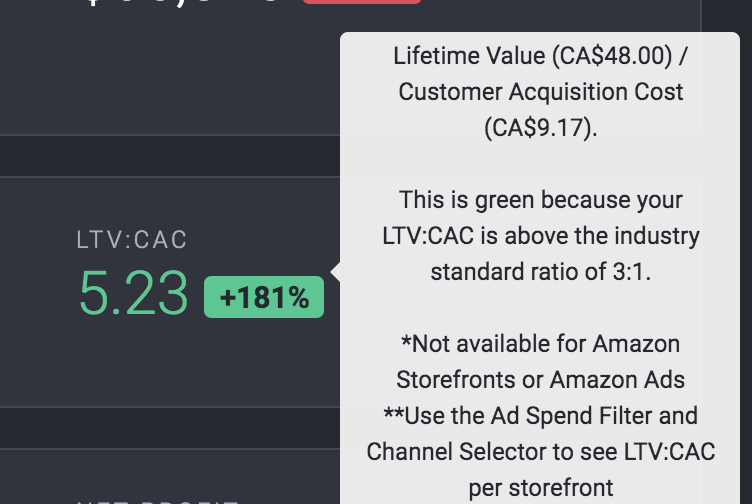




3 thoughts on “How I Doubled Our eCommerce LTV to CAC Ratio in 90 Days”